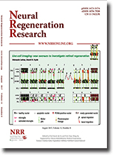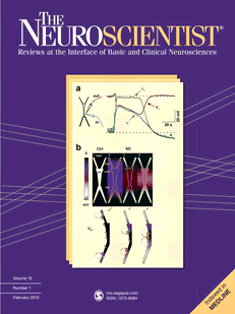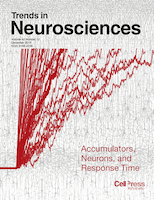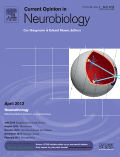
Neural Regeneration Research
Scope & Guideline
Fostering global collaboration in neural regeneration.
Introduction
Aims and Scopes
- Neuroregeneration Mechanisms:
Research on the biological processes and mechanisms involved in neural regeneration, including the role of stem cells, growth factors, and signaling pathways. - Neuroinflammation and Immune Response:
Studies aimed at understanding the role of neuroinflammation in neural damage and repair, including the interactions between microglia, astrocytes, and the immune system. - Therapeutic Strategies:
Development and evaluation of novel therapeutic approaches for treating neurodegenerative diseases and enhancing neural repair, including pharmacological interventions and cell-based therapies. - Neuroplasticity:
Investigations into the mechanisms of neuroplasticity and how they can be harnessed to promote recovery from neurological injuries. - Neuroimaging and Biomarkers:
Research focused on the identification of biomarkers for neurological diseases and the application of neuroimaging techniques to study brain function and structure. - Regenerative Medicine:
Exploration of regenerative medicine approaches, including tissue engineering and biomaterials, for repairing damaged nervous tissues. - Translational Research:
Efforts to translate basic research findings into clinical applications for improving outcomes in patients with neurological disorders.
Trending and Emerging
- Cell-Based Therapies:
There is an increasing focus on the use of stem cells and other cellular therapies for neurological repair, emphasizing their potential to regenerate damaged neural tissues. - Microglial Function and Neuroinflammation:
Research on the role of microglia in neuroinflammation and their dual roles in neuroprotection and neurodegeneration is gaining prominence, highlighting their importance in neural health. - Gene Therapy and Genetic Interventions:
Emerging studies are exploring gene therapy approaches to address neurodegenerative diseases, reflecting a significant trend towards precision medicine in neurology. - Neurovascular Interactions:
Investigations into the neurovascular unit and its role in neurodegeneration and recovery are trending, particularly in the context of stroke and other vascular-related neurological disorders. - Biomaterials and Tissue Engineering:
The application of novel biomaterials for nerve repair and regeneration is an emerging area of research, focusing on enhancing the integration of transplanted cells and promoting functional recovery. - Neurodegeneration and Aging:
Research targeting the mechanisms of aging and their impact on neurodegenerative processes is increasingly relevant, as the aging population expands globally. - Artificial Intelligence in Neuroscience:
The use of artificial intelligence and machine learning techniques to analyze large datasets and improve diagnostic and therapeutic strategies in neurology is a burgeoning area of interest.
Declining or Waning
- Traditional Pharmacological Approaches:
There has been a marked decrease in studies solely focused on traditional pharmacological interventions without the integration of novel therapeutic strategies, such as gene therapy or stem cell applications. - Animal Models of Neurodegeneration:
Research primarily utilizing standard animal models to study neurodegenerative diseases is waning, as there is a shift towards more complex and translational models that better mimic human pathology. - Basic Neuroanatomical Studies:
The publication of basic neuroanatomical studies has dropped, as the field increasingly favors functional studies that connect anatomical findings with therapeutic outcomes. - Single-Cell Analysis in Non-Neurological Contexts:
Research focusing on single-cell analysis techniques outside of direct neurobiological applications has decreased, suggesting a more concentrated effort on neuro-specific applications. - Epidemiological Studies:
Epidemiological research in the context of neurodegenerative diseases is less prominent, possibly due to a growing emphasis on mechanistic and intervention-focused studies.
Similar Journals

NEUROSCIENTIST
Elevating Knowledge in Clinical Neurology and NeuroscienceNEUROSCIENTIST is a leading journal in the field of clinical neurology and neuroscience, published by SAGE Publications Inc. With an impressive impact factor reflected in its Q1 quartile ranking in both clinical neurology and miscellaneous neuroscience as of 2023, this journal positions itself as a crucial platform for the latest research and advancements in the neural sciences. Spanning from 1995 to 2024, NEUROSCIENTIST features a range of high-quality, peer-reviewed articles that cater to researchers, practitioners, and students alike. Although it does not offer Open Access options, the journal remains a vital resource owing to its Scopus rankings, situating it within the top percentile of its categories: ranked #28 out of 400 in clinical neurology and #15 out of 113 in general neuroscience. The journal's commitment to disseminating significant findings underlines its importance in fostering advancements in neurological understanding and treatment.

Frontiers in Molecular Neuroscience
Pioneering research for a deeper understanding of the brain.Frontiers in Molecular Neuroscience, published by FRONTIERS MEDIA SA, is an esteemed open-access journal dedicated to advancing our understanding of the molecular mechanisms underlying neurological functions and disorders. Since its inception in 2008, the journal has established itself as a reputable source of cutting-edge research, earning a respectable Q2 ranking in both the fields of Cellular and Molecular Neuroscience and Molecular Biology as of 2023. With an ongoing commitment to fostering innovation, the journal presents a platform for researchers, professionals, and students to disseminate their findings and engage in scholarly discourse. The E-ISSN 1662-5099 ensures that research is readily accessible, facilitating the exchange of knowledge crucial to tackling the complexities of neurological conditions. Situated in Switzerland, the journal’s global reach is augmented by its open-access model, allowing for wide dissemination of critical research findings to a diverse audience. Join the vibrant community of scientists and practitioners who are shaping the future of molecular neuroscience through their contributions to this dynamic journal.

MOLECULAR NEUROBIOLOGY
Exploring the Molecular Foundations of NeurologyWelcome to Molecular Neurobiology, the premier journal dedicated to the exploration of the molecular mechanisms underlying nervous system function and pathophysiology. Published by Springer, this journal provides an essential platform for disseminating high-quality research in the rapidly evolving fields of Cellular and Molecular Neuroscience and Neurology, boasting an impressive impact factor that reflects its esteemed position within the academic community. With its ranking in the Q1 and Q2 quartiles for various neuroscience categories, Molecular Neurobiology stands at the forefront of groundbreaking discoveries, showcasing innovative studies that bridge basic science and clinical application. Researchers and professionals are invited to contribute to its rich portfolio, which spans from fundamental insights into cellular processes to advanced therapeutic strategies. Although Molecular Neurobiology does not operate as an Open Access journal, its influential body of work remains accessible through institutional and personal subscriptions. As we converge from 1987 to 2024, we continue to aim for excellence, seeking to catalyze progress in understanding neurological diseases and enhance the scientific dialogue within the neuroscience community.

eNeuro
Fostering connections in the ever-evolving field of neuroscience.eNeuro is a prominent open-access journal published by the Society for Neuroscience, dedicated to advancing the field of neuroscience through the dissemination of high-quality research. Launched in 2015, it reflects its commitment to accessibility by providing a platform for innovative studies and advancements in neurobiology. The journal holds a strong reputation, achieving a Q1 ranking in Medicine (miscellaneous) and a Q2 in Neuroscience (miscellaneous) as of 2023, with Scopus rankings placing it at #56 out of 113 in General Neuroscience, marking it in the 50th percentile. With its convergence to cover articles from 2014 to 2024, eNeuro continues to serve as a vital resource for researchers, professionals, and students alike, offering a comprehensive hub for the latest discoveries and theoretical developments in neuroscience. As part of its mission, eNeuro aims to foster collaboration and inspire the academic community with openly accessible content, making significant contributions to scientific discourse.

RESTORATIVE NEUROLOGY AND NEUROSCIENCE
Exploring Therapeutic Frontiers: Where Neurology Meets NeuroscienceRESTORATIVE NEUROLOGY AND NEUROSCIENCE, published by IOS PRESS, is a premier journal dedicated to advancing the fields of neurology and neuroscience. Since its inception in 1989, this journal has played a crucial role in disseminating cutting-edge research findings and innovative therapeutic approaches that aim to restore neurological function and improve patient outcomes. With a focus on developmental neuroscience and clinical neurology, the journal holds a 2023 Scopus ranking of #129 out of 400 in clinical neurology, and #15 out of 37 in developmental neuroscience, reflecting its significant influence in these domains. Although it operates on a non-open access model, RESTORATIVE NEUROLOGY AND NEUROSCIENCE offers valuable insights for researchers, healthcare professionals, and students seeking to deepen their understanding of neural restoration mechanisms and therapeutic strategies. Located in Amsterdam, Netherlands, the journal continues to foster scholarly dialogue and innovation, contributing to the global advancement of neuroscience and neurology.

TRENDS IN NEUROSCIENCES
Exploring the Frontiers of Brain ResearchTRENDS IN NEUROSCIENCES, published by CELL PRESS, is a leading journal in the field of neuroscience, offering cutting-edge insights and important developments in the rapidly evolving landscape of brain research. With an impressive Impact Factor and ranking in the top quartile (Q1) of the category for Neuroscience (miscellaneous), it is positioned as a vital resource for researchers and professionals seeking to stay abreast of the latest discoveries and trends from 1978 to the present. Specifically ranked #3 out of 113 in General Neuroscience by Scopus, this journal promotes the interdisciplinary exchange of ideas and knowledge, making it an essential platform for students and experienced scholars alike. Although it is not an Open Access journal, its value lies in its rigorous peer-review process and commitment to maintaining the highest standards of academic integrity. By continuing to explore the complexities of neural processes and behavior, TRENDS IN NEUROSCIENCES plays a crucial role in shaping the future of neuroscience research and education.

NEUROPHYSIOLOGY
Exploring the Depths of Neurophysiological ResearchNEUROPHYSIOLOGY, published by SPRINGER, is a distinguished journal dedicated to advancing the understanding of neural function and physiological processes across a broad spectrum of topics. With a rich history dating back to 1969, this journal has been instrumental in disseminating pivotal research findings and theoretical advancements within the fields of neuroscience and physiology. Although it currently ranks in the fourth quartile of both the Neuroscience (miscellaneous) and Physiology categories, this journal remains a valuable resource for researchers and professionals seeking to explore innovative methodologies and address critical issues within neurophysiological studies. While NEUROPHYSIOLOGY does not offer open access options, its latest research continues to provide insights and stimulate discussions essential for education and ongoing inquiry. Publishers and contributors to this journal contribute to a growing repository of knowledge right from the heart of the United States.

Frontiers in Neuroscience
Pioneering discoveries in the realm of neuroscience.Frontiers in Neuroscience, published by FRONTIERS MEDIA SA, is a premier open-access journal dedicated to advancing our understanding of the nervous system through innovative and rigorous research. Since its inception in 2007, this journal has become an influential platform for researchers, featuring a diverse range of topics across various subfields of neuroscience. With its current ranking in the second quartile (Q2) of the category "Neuroscience (miscellaneous)" and a commendable position of #40 out of 113 in general neuroscience according to Scopus, Frontiers in Neuroscience is recognized for its high-impact contributions. The journal promotes free access to scholarly work, ensuring that cutting-edge neuroscience studies reach a global audience and foster collaboration across disciplines. By bridging gaps in knowledge and facilitating the exchange of ideas, Frontiers in Neuroscience plays a pivotal role in addressing the complexities of the nervous system and its effects on behavior, cognition, and health.

CURRENT OPINION IN NEUROBIOLOGY
Advancing Knowledge in Neuroscience DynamicsCURRENT OPINION IN NEUROBIOLOGY, published by CURRENT BIOLOGY LTD, stands as a premier interdisciplinary journal in the field of neuroscience, specifically focusing on the latest advancements and emerging trends in neurobiology. With an impressive impact factor bolstered by its classification in Q1 in the Neuroscience (Miscellaneous) category and a notable Scopus rank of #16 out of 113 within General Neuroscience, this journal serves as an essential resource for academics, professionals, and students alike. Since its inception in 1991, CURRENT OPINION IN NEUROBIOLOGY has consistently provided insightful reviews covering various aspects of neurobiological research, thereby enhancing our understanding of complex neural processes. While the journal is not open access, it remains committed to disseminating high-quality research and fostering scholarly dialogue, making it a critical platform for those seeking to keep abreast of the dynamic developments in neuroscience.

NATURE NEUROSCIENCE
Elevating Neuroscience Through Rigorous ScholarshipNATURE NEUROSCIENCE is a premier journal published by NATURE PORTFOLIO, focusing on cutting-edge research in the field of neuroscience. With an esteemed impact factor that reflects its significance in the academic community, this journal occupies an exceptional place in the 2023 Q1 category for neuroscience (miscellaneous) and boasts a leading Scopus rank of #1 out of 113 in general neuroscience, placing it within the top 1st percentile. Since its inception in 1998, NATURE NEUROSCIENCE has consistently delivered high-quality, peer-reviewed articles that contribute to our understanding of the nervous system, driving innovation and scholarship across disciplines. Although it does not offer open access, the journal remains a vital resource for researchers, professionals, and students seeking to stay at the forefront of neuroscientific discovery and discussion. Its editorial commitment to excellence ensures that it continually shapes the trajectory of neuroscience research well into 2024 and beyond, making it an indispensable asset for anyone passionate about the brain and its complexities.